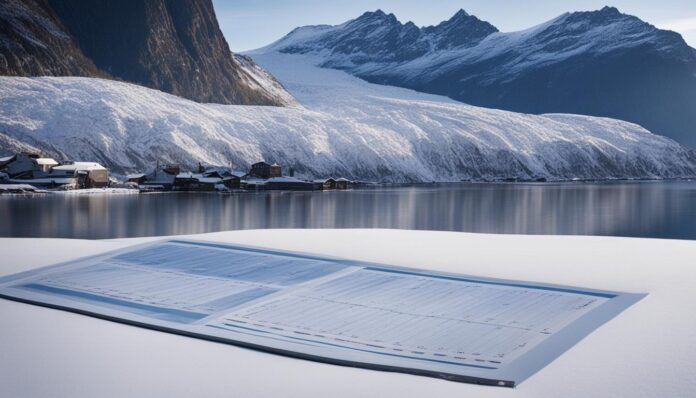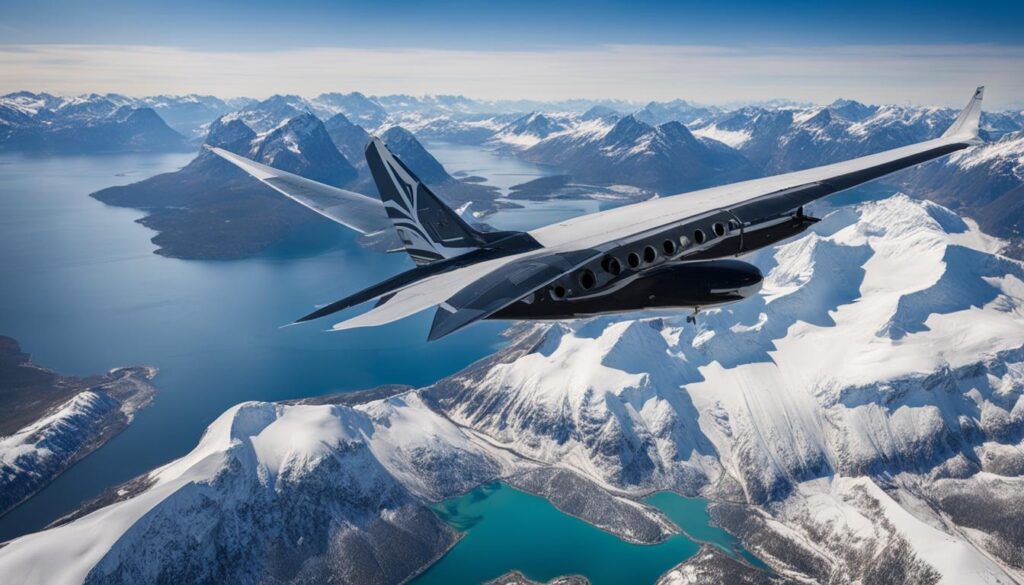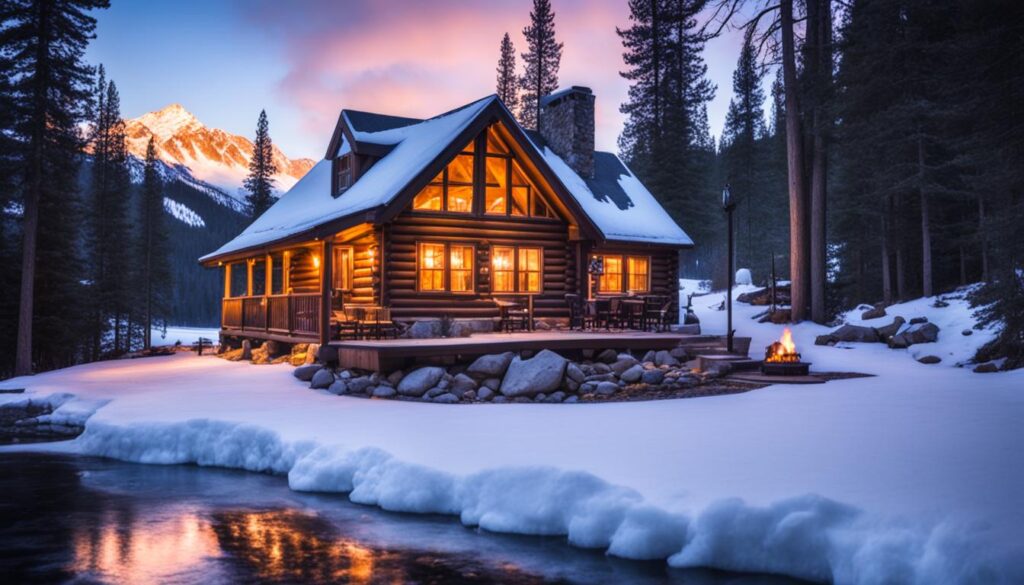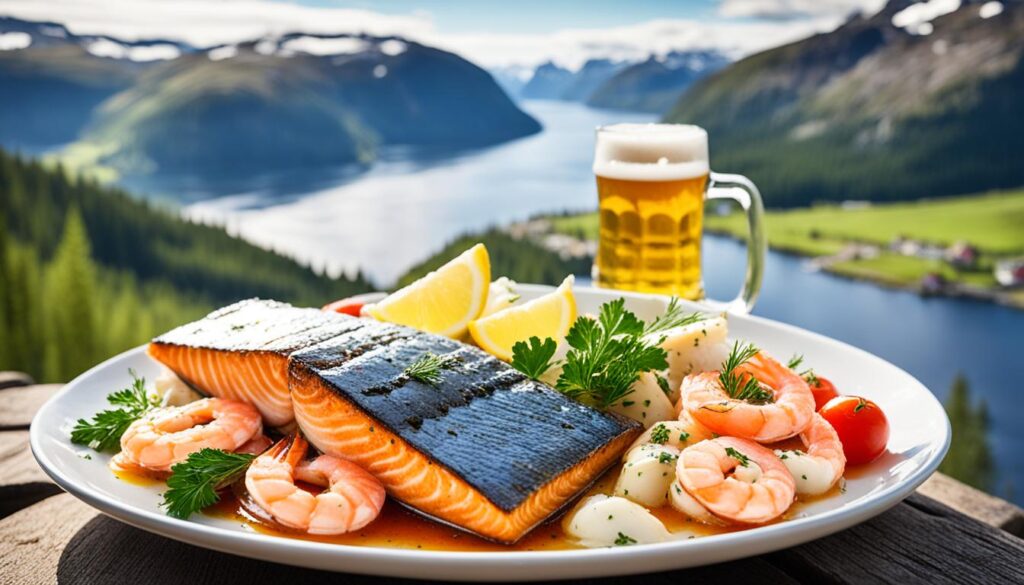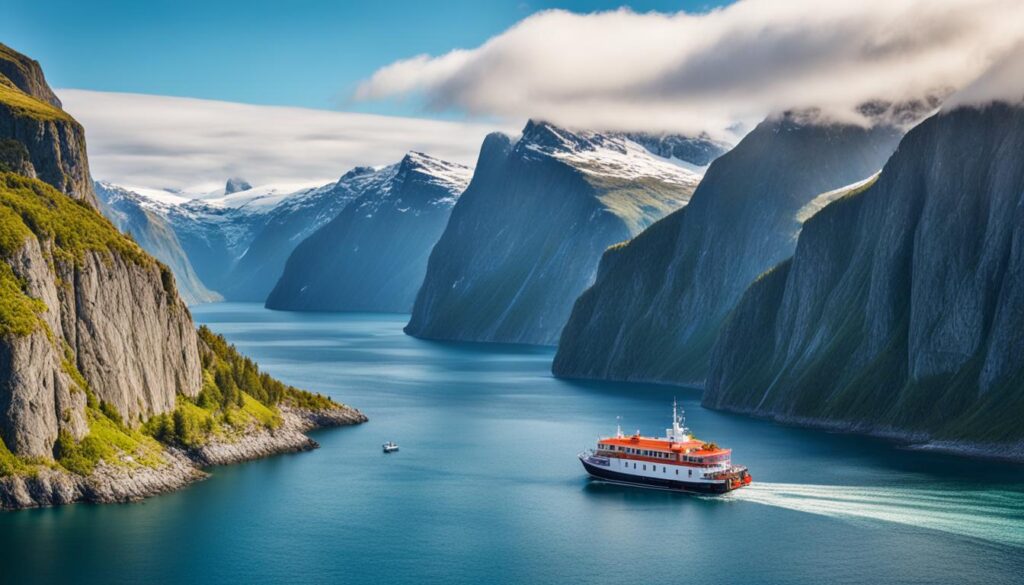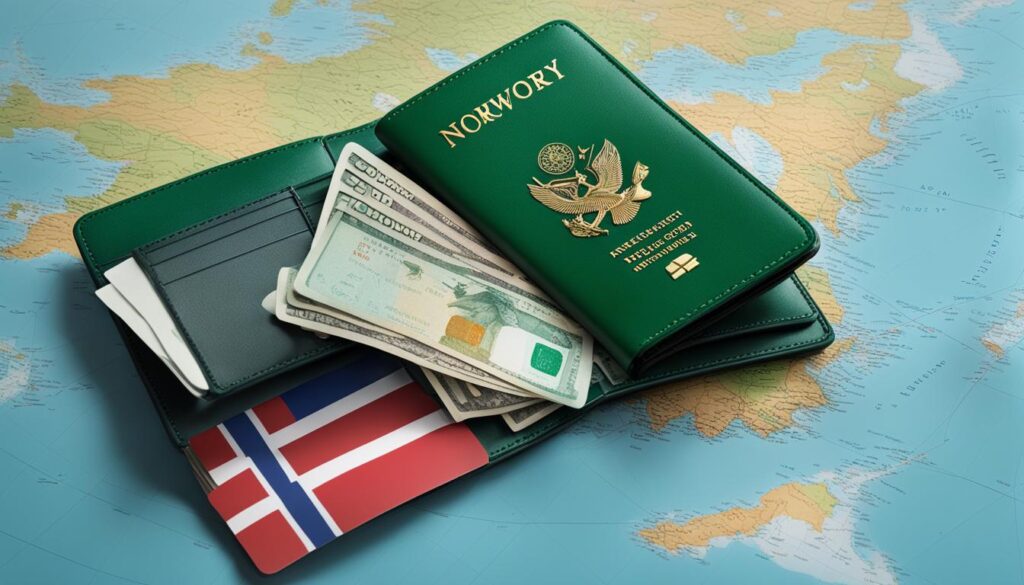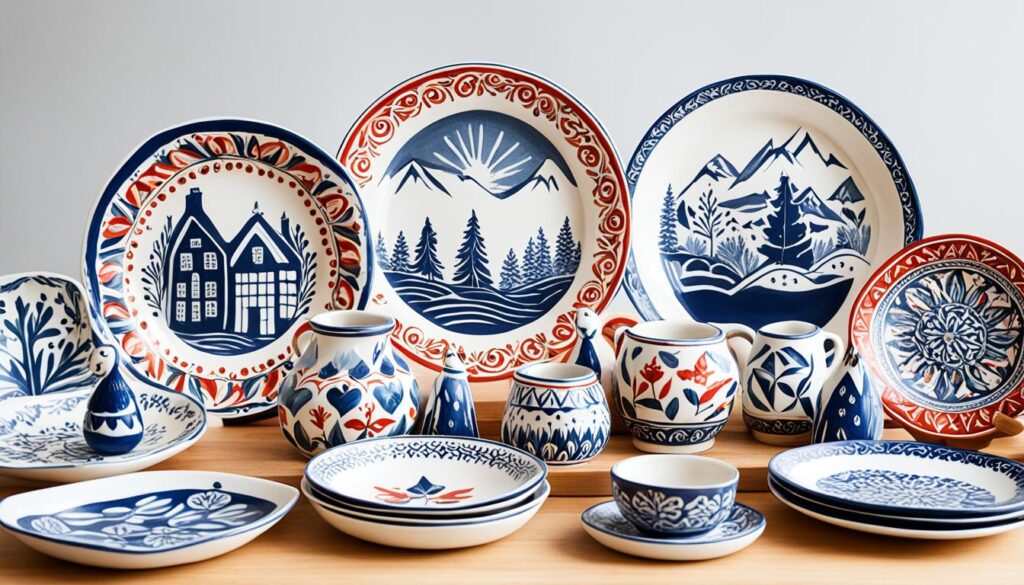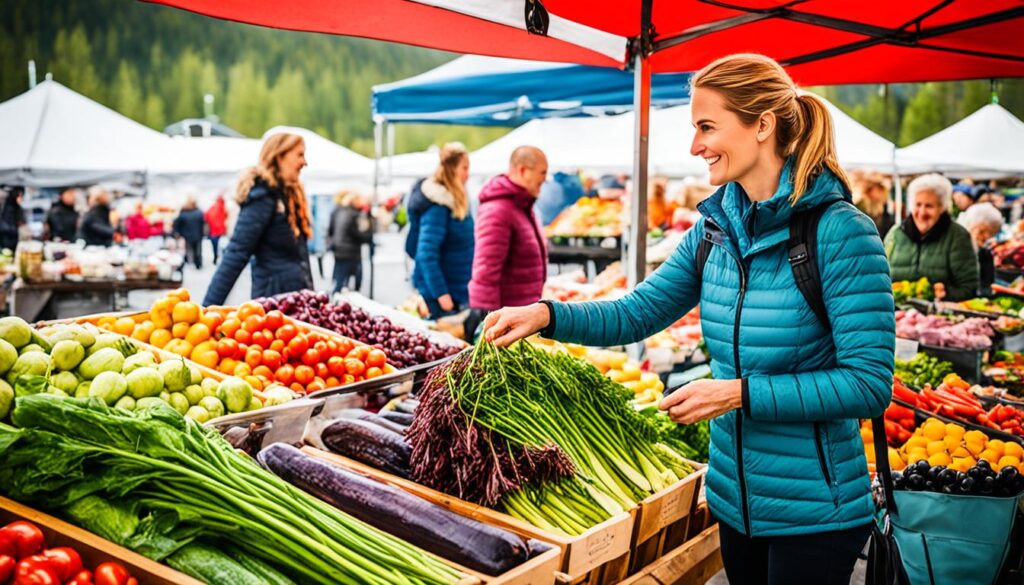If you’re planning to travel to Norway, it’s important to have a clear understanding of the expenses involved. “How much does it cost to travel to Norway?” is a common question that many travelers ask. By developing a detailed breakdown of the expenses, you can plan your trip effectively and make the most of your budget. In this section, we will provide you with the average cost of traveling to Norway, including travel expenses, accommodation, food, and more. By the end of this article, you’ll be equipped with all the information you need to budget your trip and have an amazing time in Norway.
Transportation Costs
Transportation expenses can make up a significant portion of your overall travel costs to Norway. Depending on your preferred mode of transportation and travel itinerary, it’s important to consider all the available options when budgeting for your trip. Here, we’ll discuss the different means of transportation and associated costs.
Flights to Norway
If you’re coming from a faraway destination, flying directly to Norway is the most efficient option. The cost of flights to Norway varies depending on several factors, including the airline, travel season, and how far in advance you book your ticket. On average, a round-trip ticket from the United States to Norway will cost between $400 and $800.
It’s important to note that prices can be significantly higher during peak travel seasons, so it’s advisable to book your flights as early as possible to secure the best deals. Additionally, be sure to check for any additional fees for baggage, seat selection, and other add-ons when booking your flights to avoid any unexpected costs.
Norway Train Tickets
If you plan on traveling within Norway, taking the train can be a scenic and affordable option. The country’s train network is extensive, making it easy to explore different regions. The cost of train tickets varies depending on the distance and class of travel, with tickets priced between $20 and $100 on average.
The most cost-effective way to save on train travel is by purchasing tickets in advance, which allows you to take advantage of reduced prices. Additionally, consider traveling during non-peak hours to enjoy lower rates and avoid overcrowding.
Public Transport in Norway
Public transport is an affordable way to get around Norway’s cities and towns, with a comprehensive network of buses, trams, and subways. The cost of public transport varies depending on the city and mode of travel, with fares ranging from $1.50 to $3.50 per trip.
Purchasing multi-day passes or travel cards can be a smart way to save on public transport costs. The Oslo Pass, for example, offers unlimited travel on buses, subways, and trams and free admission to over 30 museums and attractions in the city. Prices for the Oslo Pass start from $45 for 24 hours.
Accommodation Expenses
Finding the right accommodation is one of the significant expenses to consider before traveling to Norway. The country offers different options to cater to all budgets, from luxurious hotels to budget-friendly hostels. The cost of accommodation varies depending on the type of lodging you opt for and the location.
Hotels in Norway
Staying in a hotel in Norway can be a bit expensive, especially if you book in the peak season. On average, the cost of a hotel room in the country varies from $100 to $200 per night. However, prices may go up to $400 or more per night for a room in a five-star hotel.
It’s essential to research the different hotels available and their amenities before making a booking. Check for online reviews to see what other travelers say about the hotel’s quality, cleanliness, and safety.
Airbnb Rentals
Airbnb rentals are becoming a popular choice for travelers who want to experience local living and save money on accommodation expenses. Norway has many Airbnb rentals available, ranging from apartments to entire houses. The cost of renting an apartment or a private room varies from $50 to $120, while renting an entire house costs around $150 to $300 per night.
Booking an Airbnb rental can be a good option if you want to explore the local culture and save some money on dining expenses by cooking your meals in the rental.
Hostels in Norway
Hostels provide budget-friendly accommodation for travelers who want to save on their accommodation expenses. In Norway, a bed in a hostel dormitory costs an average of $30 to $45 per night. Private rooms in hostels are also available, and they cost between $80 and $150 per night.
It’s essential to check the location of the hostel and its amenities before booking. Some hostels offer free breakfast and Wi-Fi to their guests, which can help reduce your overall trip costs.
Food and Dining Costs
When traveling to Norway, getting a taste of the local cuisine is a must-do experience. However, dining out expenses can add up quickly, so it’s important to plan ahead and find affordable options that won’t leave a dent in your budget. Here is a breakdown of average food expenses in Norway:
| Meal Type | Average Cost |
|---|---|
| Traditional Norwegian Dish | $20 – $30 |
| Mid-Range Restaurant Dinner for Two | $85 – $130 |
| Fast Food Meal | $15 – $20 |
| Coffee (Regular) | $4 – $6 |
| Local Beer (0.5L) | $10 – $15 |
Don’t worry if these prices are too steep for your budget. There are plenty of affordable restaurants in Norway that offer delicious food at reasonable prices. Additionally, many supermarkets and convenience stores offer pre-packaged meals, snacks, and drinks that are equally tasty and much cheaper. Alternatively, consider booking accommodation with a kitchenette and cooking your own meals using locally sourced ingredients.
Pro tip: Visit a local open-air market and enjoy a picnic by the fjords. Not only will you save on dining expenses, but you’ll also get to enjoy stunning views of Norway’s natural beauty.
When dining out, be sure to try some traditional Norwegian dishes such as lutefisk, rakfisk, brown cheese, and Fårikål. These dishes are deeply rooted in Norway’s culinary history and are a must-try for food enthusiasts.
So, whether you’re looking for high-end dining or budget-friendly options, Norway has something for everyone when it comes to food and dining.
Sightseeing and Activities
Norway is a destination full of natural beauty and exciting activities for travelers. When planning your itinerary, be sure to include these popular landmarks and attractions:
- Northern Lights: One of the most famous natural phenomena on the planet, the Northern Lights, or Aurora Borealis, is best viewed from late September to late March. Be sure to pack warm clothing and book a guided tour for the best experience.
- Geirangerfjord: A UNESCO World Heritage Site, this stunning fjord is surrounded by towering mountains and waterfalls. Take a cruise for a close-up view or hike the surrounding trails for a scenic adventure.
- Bergen: Known as the gateway to the fjords, Bergen is a charming city with colorful wooden houses lining its streets. Take the funicular to the top of Mount Fløyen for panoramic views or tour the historic Bryggen Wharf.
- Vigeland Sculpture Park: Located in Oslo, this park is a unique art installation featuring more than 200 bronze, granite, and cast iron sculptures by Gustav Vigeland. It’s a must-visit for art enthusiasts and a great place for a picnic.
When it comes to activities, Norway has something for everyone. Some popular options include:
- Hiking: Norway has countless trails for hikers of all levels, including the famous Trolltunga and Preikestolen. Be sure to check the weather conditions and pack appropriate gear.
- Skiing and Snowboarding: Norway is a popular destination for winter sports, with many ski resorts offering world-class slopes and facilities. Try Hafjell or Trysil for an unforgettable experience.
- Dog Sledding: For a truly unique experience, try dog sledding across Norway’s snowy landscapes. Many tour companies offer half-day or full-day excursions.
- Fishing: Norway is known for its fishing culture, and there are plenty of opportunities to catch cod, salmon, trout, and other fish species. Hire a local guide for the best experience.
While some activities may have additional costs, most of Norway’s natural attractions are open to the public and free to visit. Be sure to factor in the cost of transportation and any guided tours when planning your sightseeing and activities.
Travel Insurance and Visa Fees
Planning a trip to Norway requires more than just budgeting for your flights and accommodation. When traveling internationally, it’s crucial to consider additional expenses, such as visa fees and travel insurance.
Travel insurance is a must-have for any trip, including Norway. It helps protect you in case of emergencies, such as illness, injury, or lost luggage. Policies can vary in coverage and cost, depending on your needs and travel plans. Before purchasing travel insurance, be sure to research coverage options and compare prices.
For those traveling to Norway, visa fees may also apply, depending on your country of origin. As of 2021, the visa fee for a Schengen visa, which permits travel within the European Union, is $80 USD for adults and $45 USD for children. Be sure to check with the Norwegian embassy or consulate in your country to determine visa requirements and costs.
If you plan to visit Norway for longer than 90 days, you’ll need to apply for a long-stay visa. This visa requires additional paperwork and fees. It’s essential to check the entry requirements for your specific situation to avoid any complications during your travels.
When budgeting for your trip to Norway, be sure to factor in these additional expenses. By considering all the costs associated with travel, you can make informed decisions and plan your trip effectively.
Currency Exchange and Banking Fees
When traveling to Norway, it is important to understand the currency exchange rates and banking fees to effectively manage your finances. To exchange your currency, you can visit banks, exchange offices, and ATMs found throughout the country.
Most banks in Norway charge a fee for exchanging currency, and rates may vary depending on the bank. Additionally, ATM withdrawals may also come with a fee, and it is advisable to check with your bank regarding international transactions and any associated fees.
It is important to note that some merchants in Norway may not accept credit cards, so it is advisable to carry some cash with you at all times. Do keep in mind that it is illegal to pay with cash when the amount exceeds 40,000 NOK (approximately $4,500 USD)
If you have a Norwegian bank account, you can avoid excessive fees by using local ATMs to withdraw money. These can be found throughout the country, including at airports and train stations.
Remember to keep all your receipts and check your account statements regularly to ensure you aren’t charged any additional and unnecessary fees.
Miscellaneous Expenses
While planning your trip to Norway, it’s important to keep in mind the various miscellaneous expenses that may arise. These can include tipping, souvenir shopping, and other unforeseen expenses. Below, we’ve detailed some of the most common miscellaneous expenses you may encounter during your trip.
Tipping in Norway
In Norway, tipping is not expected as service charges are usually included in the bill. However, if you receive exceptional service, it’s polite to leave a small tip of around 10%. Additionally, if you’re taking a taxi, it’s customary to round up the fare to the nearest whole number.
Souvenir Shopping
No trip is complete without bringing back some souvenirs to remember your adventures. Norway has a range of unique traditional handicrafts and stunning artwork that make excellent souvenirs. Keep in mind that prices can vary depending on the item and the store, so it’s important to shop around before making a purchase.
Other Miscellaneous Expenses
There may be other expenses that you may not have considered while planning your trip to Norway. These can include medical expenses, travel insurance, phone bills, and emergency expenses. It’s always a good idea to have some extra cash on hand to cover these unforeseen expenses.
Budgeting Tips for Traveling to Norway
Traveling to Norway doesn’t have to be an expensive affair. By following these budgeting tips, you can save money while enjoying all that Norway has to offer.
1. Plan Your Trip in the Off-Season
Visiting Norway during the peak season (June-August) can be quite expensive. If you’re looking to save money, plan your trip for the off-season (September-May) instead. You’ll find better deals on flights, accommodation, and activities.
2. Utilize Public Transport
Public transport in Norway is reliable and affordable. Trains and buses are an efficient way to get around, especially if you plan on visiting multiple cities or towns. Avoid taxis, as they can be quite expensive.
3. Cook Your Own Meals
Eating out in Norway can be costly, so consider cooking your own meals. Most hotels, Airbnb rentals, and hostels have kitchens where you can prepare your own food. Head to local grocery stores or markets to buy ingredients.
4. Take Advantage of Free Activities
While you may want to visit popular attractions, there are plenty of free things to do in Norway. You can hike in the mountains, visit parks and gardens, and explore small towns and villages. Check online or at visitor centers for a list of free activities.
5. Use Discount Cards
If you plan on visiting a lot of museums and attractions, consider purchasing a discount card like the Oslo Pass. It offers free admission to many museums and attractions, as well as discounts on tours, entertainment, and dining.
6. Stay Outside the City Center
Accommodation in the city center can be costly, so consider staying outside the main tourist areas. Look for hotels or Airbnb rentals in suburban or residential areas that are still well-connected by public transport.
7. Book in Advance
Booking your flights, accommodation, and activities in advance can save you money. Look for early booking discounts or non-refundable rates to get the best deals. It also gives you more time to plan and budget for your trip.
8. Research Local Customs and Tipping Practices
Tipping in Norway isn’t mandatory, but it’s appreciated. Research local customs and tipping practices before your trip to avoid over-tipping or under-tipping. This can also help you budget for dining out or using transportation services that accept tips.
By following these tips, you can plan an affordable trip to Norway. Don’t let the cost deter you from experiencing the amazing culture, nature, and history that this country has to offer.
Conclusion
Planning a trip to Norway requires careful budgeting and consideration of various expenses involved. By using our Norway travel cost calculator and taking note of the average costs of transportation, accommodation, food, sightseeing, and other miscellaneous expenses, you can plan your trip effectively and avoid any unexpected costs.
Remember to consider travel insurance and visa fees, as well as currency exchange rates and banking fees. Keep in mind that there are many affordable options available for transportation and accommodation, such as public transport and hostels.
To save money while traveling in Norway, we recommend following our money-saving tips, such as trying out local street food and purchasing souvenirs from markets instead of expensive tourist shops.
Using our budgeting tips and travel cost calculator, you can have an affordable and enjoyable vacation experience in Norway. Have a great trip!




























